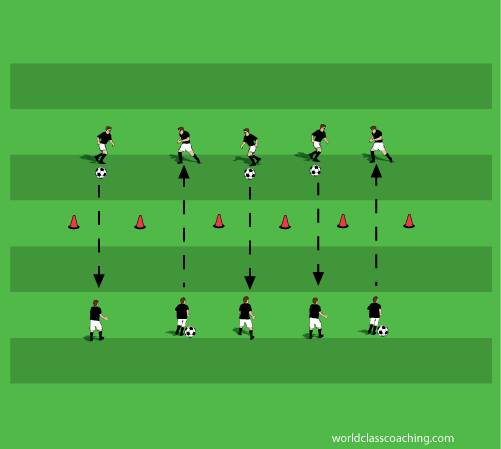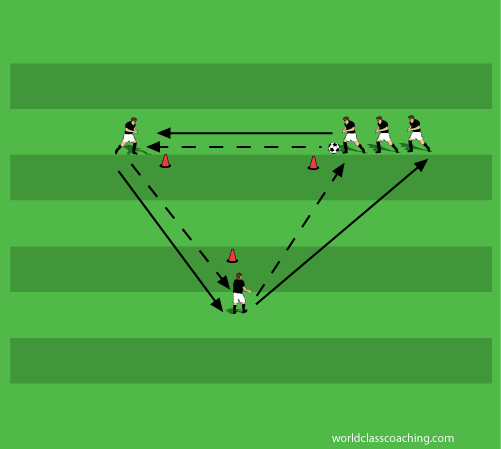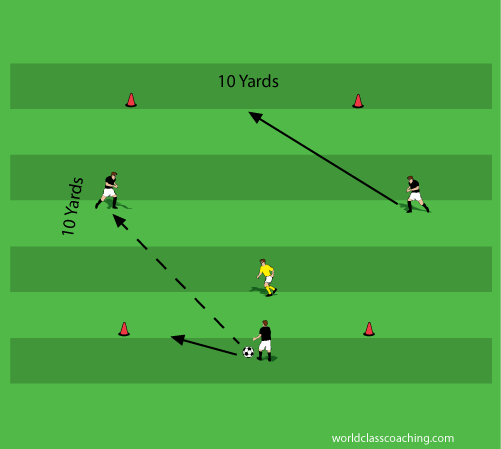This is a passing practice session that I have run with various age groups. I like it because you can coach just the basic technique or you can go into great detail depending on the age and ability of the players in the group your working with. Each phase can also be made competitive which always drive performance higher.
I always begin with a simple ball striking exercise where I don’t give the players any coaching points in advance. I just let them get on with it and see how they do. Then I know where the players are starting from and what they are need help with.
After a couple of minutes of I’ll ask the players to focus on one or two aspects that will improving their passing and let them go again to see how quickly they are able to incorporate these ideas. Everything we do for the rest of the session is based on this evaluation. If they pick it up quickly, I’ll get them another coaching point or two. If they struggle then I know we’ll be keeping things rather simple with this group of player and only increase the challenge very slowly.
I still like to make it competitive, even with the less skillful groups so I’ll ask them to see which group can make 10 perfect passes the quickest. A perfect pass is one that goes directly to the receiver, on the ground and is control with one touch. After each round the player on one side of the cone each move down one so that they have a new partner. The player on the end moves to the other end of the line.
The next phase incorporates movement, directing the first touch and some basic concepts of support.
The goal is to treat the cone triangle as three defenders and move the ball around them so that it is always on the outside of the triangle. The receiving player is stand away from the cone defender so that the passer has a target away from the defender. The receiver then takes the ball with his back foot and opens up to pass the ball to the next receiver. Each player follows his pass.
I start with the cones just five yards apart and increase the distance as the players improve. A progression of this exercise would be to have the players start next to the cone/defender and then check away as the ball arrive to the passer so that they learn to time their movements with the ball. Another progression would be for the receiver to set the ball back to the passer, move around the outside of the cone and receive a return pass.
For younger players that have difficulty focusing on keeping the ball outside the cones, I add a defender to the middle of the triangle. This player is only allowed to touch the ball if it comes in the middle. I’ve found that adding this player forces the passer to make sure that the pass stays on the outside.
A further benefit of adding a defender is that they give the supporting players a better picture of the angles that are needed to make to ensure that the passer can get the ball to them. I use this when we move on to 3v1 or 4v1 to describe the supporting angles as ‘getting outside the triangle’.
I prefer to use 3v1 rather than 4v1 because it forces the outside players to move much more.
I don’t do anything very different with exercise. It’s basically a game of keep away that test the players ability to make good choices and proper passes.
I end the session with a scrimmage where the players are only allowed to score after they have made a certain number of passes. The teams can have an equal number of player or you can have one or more players serve as neutral players who assist whichever team is in possession. The coach can also join in as a neutral player to help provide an example to the players and help the session flow.
Feel free to contribute your own variations or progression on any of these exercises.





